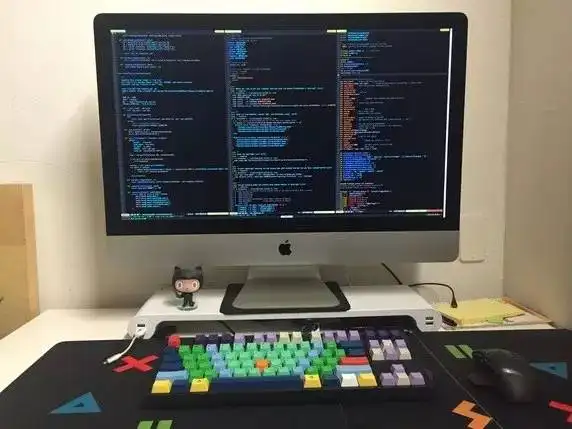Editor’s Note:This article was written by Sunitha Muthukrishna, a program manager on the Windows Azure Sites team.
According to the application you write,Windows Azure Website may or may not include all the modules or libraries your application needs.
Don’t worry ,in this blog post,I’ll go into detail about using Virtualenv and Python Tools< for Visual Studio /span>Steps to create a Python environment for your application. In the meantime, I’ll also show you how to publish a Django based site to a Windows Azure website.
Create a Windows Azure website using a MySQL database
,Log in now span>Azure Management Portal,Create a new website using the Custom create option. For more information, see How to create an Azure website. We will create an empty website using a MySQL database.

Finally select the region ,After choosing to accept the website terms, the installation can be completed. As usual it is recommended that you place your database in the same region as your website to keep costs down.

Double-click your site in the admin portal to view the site’s dashboard. Click “Download publish profile”. The .publishsettings file will download,This file can be used for deployment in Visual Studio.

Create a Django project
In this tutorial we will use Visual Studio to build Django Web app. To build applications using Visual Studio, install PTVS 2.0. For more information, see How to build Django using Visual Studio Applications
Open Visual Studio and create a new project,by clicking New Project>Other Languages>Python > DjangoProject

Create a new Django application for your Django project in Solution Explorer by right-clicking DjangoProject > Add > DjangoApp

Enter the name of the Django application,for examplemyblog

Create Virtual Environment
Simply put, you can create a custom isolated Python through virtualenv environment. That means ,you can customize and install different packages,without affecting the rest of the site,so this environment can also be used for conducting experiments.
In Solution Explorer, right-click Python Environments in the Django project and select “Add Virtual Environment”

Enter the virtual environment name – for example “env”. This will create a folder named “env” which contains your virtual Python environment but does not contain any Python packages other than pip

In the virtual environment Install the MySQL-Python and Django packages in
In Solution Explorer,right-click on environment env and Install Python package:django

You can view the output of the Django installation in a virtual environment

Similarly,you Mysql-python is required to be installed but please use easy_install instead of pip as shown here
<img src="https://img.pa;
· First,add'django.contrib.admin' tosettings. INSTALLED_APPSSettings
INSTALLED_APPS = (
'django.contrib.auth',
&# 39;django.contrib.contenttypes',
'django.contrib.sessions',
'django.contrib.sites',
'django.contrib.messages',
'django.contrib.staticfiles',
'myblog',
)
· Now ,updatedurls.py, A request for the home page view.
from django.conf.urls import patterns, include, url
#import admin module
from django.contrib import admin
admin.autodiscover()
#set url patterns to handle requests made to yourapplication
urlpatterns = patterns('',
url(r'^$','DjangoApplication.views.home', name='home'),
url(r'^admin/',include(admin.site.urls)),
)
· Next,We create admin.py in the myblog/ folder to register the Post model
from models import Post
from django.contrib import admin
#Register the database model so it will be visible in theAdmin site
admin.site.register(Post)
Build page Views
We will create a page view that lists all the blog posts you have created. To create a page view, please add the views.py file to the myblog/ folder
from django.shortcuts import render_to_response
from models import Post
#Creating a view for the home page
def home(request):
posts = Post.objects.all()
#Renders a given template with a givencontext dictionary and
returns an
#HttpResponse object with that renderedtext.
return render_to_response('home.html',{'posts':posts} )
Displaying the Post object is not very helpful to the user,We need a more informative page to display the post list. In this case you will need to use a template. Usually “templates are used to generate HTML” but Django templates can also generate any text-based format.
To create this template, you first need to create a file named templates< under myblog/ /strong> directory. To display all articles in views.py, please create home.html under the templates/ folder strong>,It will traverse and display all Post objects.
My Blog
{% for post in posts %}
{{ post.title }}
{{ post.date}}
{{ post.body }}
{% endfor %}
Set static directory path
If you visit the admin site at this time, you will find that the stylesheet is corrupted. This is because there is no static directory configured for the application.
Please set the static root folder path to D:\home\site\wwwroot\static
from os import path
PROJECT_ROOT =path.dirname(path.abspath(path.dirname(__file__)))
STATIC_ROOT = path.join(PROJECT_ROOT,'static').replace('\\','/')
STATIC_URL = '/static/'
After saving these changes to settings.py,Run this command to collect all static files into the “static” folder of the admin site using the Django Shell
Python manage.pycollectstatic
Set template directory path
You’re done now!Django requires that the paths to the template directory and static folder directory be configured in settings.py. Please follow the steps below to do this.
· Create a variable for the path of SITE_ROOT
import os.path
SITE_ROOT = os.path.dirname(__file__)
· After that, we will set the path to the Templates folder. When a request is made, TEMPLATES_DIR tells Django where to look for your application’s templates.
TEMPLATE_DIRS = (
os.path.join(SITE_ROOT,”templates”),)
Deploying the application
Now we are ready to deploy the application to the Windows Azure website mydjangoblog. Right-click on the DjangoProject and select “Publish”

You can verify the connection,and click Publish to start the deployment. Once the deployment is successfully completed, you can browse the website to create your first blog.

Create a blog post
To create a blog, please log in to the admin using the superuser credentials you created earlier Sitehttp://mydjangoblog.azurewebsites.net/admin.

The dashboard will include links to the models and can be used to manage the content of the models used by the application. Click Posts

Create your first blog post and save it

Browse the website homepage, to view newly created articles.

Now you have a basic understanding of the steps to build what you need on a Windows Azure website using Python. Happy coding
Further reading
Django project
Python Tools for Visual Studio Wiki
Video tutorial for Python Tools for Visual Studio
Windows Azure Website (WAWS)
This article is translated from:
http:// blogs.msdn.com/b/windowsazure/archive/2013/12/17/using-django-python-and-mysql-on-windows-azure-web-sites-creating-a-blog-application.aspx
Redirect: https://www.cnblogs.com/sesexxoo/p/6191066.html
diameter. Please follow the steps below to do this.
· Create a variable for the path of SITE_ROOT
import os.path
SITE_ROOT = os.path.dirname(__file__)
· After that, we will set the path to the Templates folder. When a request is made, TEMPLATES_DIR tells Django where to look for your application’s templates.
TEMPLATE_DIRS = (
os.path.join(SITE_ROOT,”templates”),)
Deploying the application
Now we are ready to deploy the application to the Windows Azure website mydjangoblog. Right-click on the DjangoProject and select “Publish”

You can verify the connection,and click Publish to start the deployment. Once the deployment is successfully completed, you can browse the website to create your first blog.

Create a blog post
To create a blog, please log in to the admin using the superuser credentials you created earlier Sitehttp://mydjangoblog.azurewebsites.net/admin.

The dashboard will include links to the models and can be used to manage the content of the models used by the application. Click Posts

Create your first blog post and save it

Browse the website homepage, to view newly created articles.

Now you have a basic understanding of the steps to build what you need on a Windows Azure website using Python. Happy coding
Further reading
Django project
Python Tools for Visual Studio Wiki
Video tutorial for Python Tools for Visual Studio
Windows Azure Website (WAWS)
This article is translated from:
http:// blogs.msdn.com/b/windowsazure/archive/2013/12/17/using-django-python-and-mysql-on-windows-azure-web-sites-creating-a-blog-application.aspx
Redirect: https://www.cnblogs.com/sesexxoo/p/6191066.html


 微信扫一扫打赏
微信扫一扫打赏
 支付宝扫一扫打赏
支付宝扫一扫打赏

